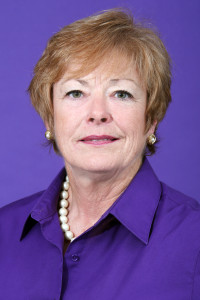In Endangered Minds, Jane Healy opens by recounting a conversation among a group of educators. In their exchange they remark that they can’t teach the same curriculum or in the same ways they had in the past.
“These kids are so sharp, but sometimes I think their minds are different from the ones I used to teach. I’ve had to change my teaching a lot recently, and I still wonder how much they’re learning.”… Likeable, fun to be with, intuitive, and often amazingly self-aware, they seemed, nonetheless, harder to teach, less attuned to verbal material, both spoken and written. (13)
Many of us would be amazed to learn that these words were actually published in 1990 since the conversation is not all that different today. Just like in the 90s, today’s learners present us with unique teaching and learning opportunities. Students are challenging our educational paradigms, having grown up in the most image-rich, screen-oriented world we have ever experienced with just-in-time knowledge at their fingertips.
As a life long educator with over two decades in public schools and 15 years in higher education, I’ve always been curious about how to truly engage students. While I understand and consistently apply what we have historically known about working successfully with emerging adult learners, my learning curve about how best to connect with students has remained steep, as I have had to keep learning too.
In my ongoing quest to better understand students in our academic settings, I had the opportunity this fall to travel to two unique schools, one on the east coast and one in the north Texas region. These campuses are college prep schools that work with students who have learning differences. While the difference may not be outwardly visible or immediately recognizable, these learners operate differently from more typically developing 21st century students. On my visits, I sat in classrooms, observed instruction, watched teachers interact with their learners, and had extended and rich conversations with the leaders of the schools. Below, I offer my primary takeaways that were beneficial to me as a teacher seeking to more fully engage my students. None were surprising or particularly revolutionary; some simply reinforced practices I am already using.
- As best possible, know your students. I heard students being addressed by name by their teachers. There was no hiding in the classroom; all were involved and all were responsible for the material and for participating in the related discussions.
- Be approachable and make yourself available to your students. Both of the school leaders talked about the important work they do in helping students develop strategies for learning and for personal advocacy. This may come in the form of where a student sits in the classroom to taking advantage of office hours to meeting with the professor and asking specific questions about course content or expectations. As one head of school shared, “We help to equip students with advocacy skills but if the professor is not open and approachable, the advocacy skills will fail—they will serve no purpose.” She went on to say that when students have the personality and the perseverance, they can succeed in the university environment. As evidence, she recounted the experiences of a particular student noting, “We had a student who went to Arizona and that young man sat on the front row every day and made a point to get to know all of his professors.”
- Be flexible in the ways you present material. While in classrooms, I observed some students using tablets or laptops for viewing the materials while others chose hard copies and highlighters. By making course matter available through multiple media (posted to a learning management system; texts available in hard copy or e-versions), students can choose the format that works best for them.
- Be flexible in the ways you assess learning. At one of the school sites, senior students were charged with conducting an in-depth research project, writing an accompanying paper, and making a public presentation of their findings as a condition of graduation. While this is a rigorous
and challenging assignment, students are allowed to select a research topic that is personally meaningful and interesting to them. Samples included the history and design of surfboards, the impact of Shakespearean plays on modern English language, shark attacks, and exorcism. Teachers knew that demonstrating research skills and the capacity to write a paper and present publicly could be accomplished through any topic.
As teacher-scholars, I believe we must be equally devoted to long-term learning as it is how we continue to grow and mature in our craft. Seeking ways to more effectively connect with and engage the learners in our classrooms will increase our levels of satisfaction and benefit our students.
Work Cited
Healy, Jane. Endangered Minds: What Children Don’t Think—and What We Can Do About It. New York: Touchstone, 1990.
 This article was written by Marla McGhee, College of Education and 2015 Koehler Center Fellow for Student Engagement, for the Spring 2015 Issue of Insights Magazine.
This article was written by Marla McGhee, College of Education and 2015 Koehler Center Fellow for Student Engagement, for the Spring 2015 Issue of Insights Magazine.